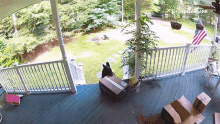We’re delivery people not jargon people.
So we’ve rustled up a list of logistics jargon that we’ve attempted to un-pretzel into regular lingo.
Hopefully it’ll help demystify those key logistic terms and acronyms. Let’s get into it…
Auto batching / stacking
It’s when tech automatically bundles orders together with similar delivery times & locations into single pickups
It means:
- more orders in less vehicles (better for the environment)
- more efficiency
- less cost
Buy Online, Pick up Anywhere (BOPA)
It’s e-comm fulfilment that lets customers collect online orders from, well, anywhere. Not just in store, but from parcel lockers, even offices & hotels – for maximum ease & efficiency.
Bracketing
Bracketing is when a customer buys multiple sizes or colours of an item and returns what’s not wanted.
More bracketing = more returns, which can create a logistical headache for retailers.
‘Clicks & Bricks’ or ‘Click & Mortar’
When retailers have online and offline operations e.g. a website plus a store. Customers get face-to-face shopping and online ordering and delivery options.
Cold chain
In delivery land, ‘cold chain’ has one goal: to keep goods cold at all times.
It’s the process of keeping temperature sensitive deliveries – like fresh groceries or even vaccines – at the right temperature at each point in the delivery ‘chain’ – from storage to collection and transit to final delivery.
Cross-docking
Cross docking starts with large vehicles unloading goods at a warehouse / distribution centre. Rather than being stored, these goods then get sorted and loaded into smaller vehicles to be delivered to customers.
Curbcierge
It’s a premium curb side pickup service with a dedicated staff member to make sure the collection process is quicker and easer.
Deluxe Delivery
If you think ‘deluxe delivery’ sounds fancy, you’re right. It’s the ultra-convenient type, where customers don’t have to lift a finger. Like groceries delivered straight to your fridge (as seen by Walmart’s in-home delivery).
DC
New to logistics? About that ‘DC’ reference you keep seeing… Nope, nothing to do with DC comics. It stands for Distribution Centre – essentially a fancy warehouse that stores products before the next leg of their journey.
ETAs
We take ETAs pretty seriously… so what are they? They’re an ‘estimated time of arrival’ for a package. Our CEO Seb actually founded Gophr to make sure deliveries were always tracked properly. Because better ETAs = happier customers.
Forward Stocking Location (FSL)
Ever heard of FSL? It’s short for ‘forward stocking location.’ It’s essentially a smaller warehouse or ‘hub’ strategically placed closer to end customers. The result? Lower transportation costs and faster delivery.
Hands-free shopping
Shop in-store but leave items behind Instead have them delivered later that day, wherever you want (even Heathrow Terminal 5) It’s what we do for DropIt Shopping to give their customers a premium experience.
Inter Branch Transfer (IBT)
…or as non-logistic folk would say: The process of moving inventory from one location (e.g. a warehouse) to another.
Micro fulfilment
It’s fulfilment (storing/picking/packing) from a small space e.g. a mini warehouse or a dedicated area in-store, in densely populated areas located closer to the customer, to reduce delivery times.
Multi-carrier planning
It’s how a company manages its parcel and delivery flow when using multiple carriers. Shippers might choose to use multiple carriers for greater flexibility and to offer customers a wider range of delivery options.
Multi-modal fleet
When a courier has more than one kind of vehicle available. Like us (we have 6 in case you’re wondering).
Peaking factor
How big shippers (like Fedex) calculate their peak delivery surcharges by comparing how much they ship in a random week in June vs. a busy week during peak. That’s your peaking factor.
Peak shippers
If your weekly delivery orders over the Xmas period reach 3x your average February rates, then you’re a peaky shipper.
Porch pirate
Over a third of Americans have lost parcels to porch pirates. So what are they?
They are thieves who steal packages from other people’s porches… hence the name.
Disclaimer: they’re not always human…
Proof of delivery
Why’s a courier taking a photo of me?
Truth is, they’re taking a photo of the package, not you (sorry).That’s Proof of Delivery (or POD).
It’s an upgrade from a signature squiggle to a pic, to prove that a package has been delivered successfully.
Ship-from-store
We’re big fans of ship-from-store. But what is it?
It’s a fulfilment model using stores as mini warehouses for quick local deliveries. With it, physical stores can rival online-only competitors.
SKU
SKU stands for Stock Keeping Unit.
It’s a scannable code on a particular item stored in a particular location & keeps track of products so they’re easy to search for and manage.
Trip Twinning
“Trip twinning” is making a delivery from A to B, then picking up all the other parcels along that route that are heading in the same direction. We built our entire routing system on this idea so couriers can do more deliveries in less time and miles.
WISMO
WTH is WISMO? And why does it cost so much? It stands for ‘Where is my order’. Bringg says 1/3 retailers say these inquiries have a big impact on their last mile costs. Should carriers be assessed by communication skills vs. delivery costs?
Seen logistics jargon you need untangling? Send them over to press@gophr.com.



